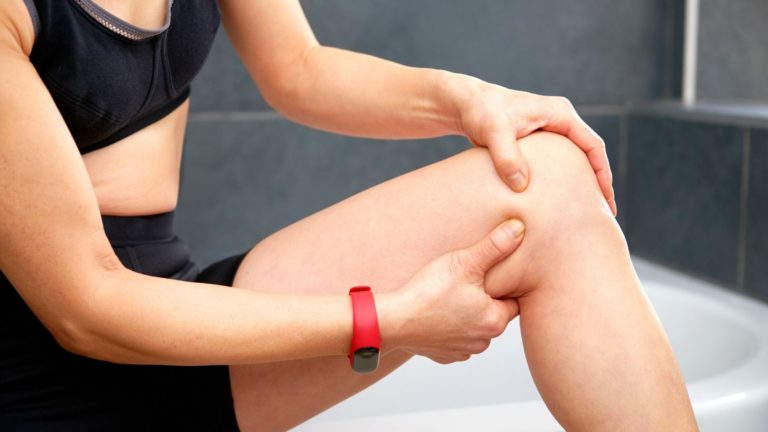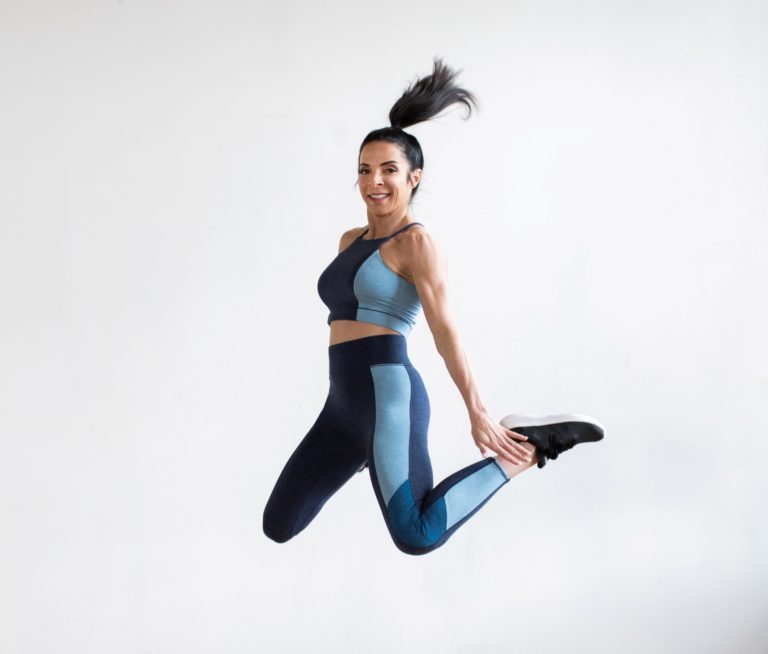
Is Stretching Good or Bad? A Comprehensive Look

Do you remember the Presidential Physical Fitness Test from grade school? If you’re reading this in the U.S., there’s a good chance it brings back memories of having to do pull-ups, run a mile, and do sit-ups in front of all the kids in your gym class. As an overweight kid, I learned that I could avoid humiliation and get my chin to the pull-up bar one time (…if I timed a jump perfectly).
In retrospect, the strangest element of that test was the sit-and-reach. Kids would put their feet flat against a box with knees straight, then they’d reach as far forward as they could. To qualify for the Presidential Award, you needed to reach past your toes.
Even though I was a big kid, I was competitive, and the sit-and-reach was my chance to shine. For a few days before the test, I’d spend an hour at a time practicing my hamstring stretch. I’d tremble with nerves as I approached the sit-and-reach box before I put my practice to the test. With one good lunge forward, I’d ace it, nearly snapping my hamstrings in half in the process. I’d be sore for a few days after. But it was worth it for the glory.
It appears that they phased out the sit-and-reach sometime in the last decade (and eventually phased out the fitness test altogether). Good. My hamstrings and self-worth took years to recover. Beyond that, as we’ll see, stretches like the sit-and-reach might actually be counterproductive for some people.
There is mounting evidence that static stretching before activity (like holding a hamstring stretch) reduces subsequent power output from muscles. But it’s complicated, with lots of variance among studies and individual athletes. Let’s break down the basics of what you need to know to make your own stretching decisions.
What is stretching?
Stretching includes a number of related activities that can affect performance and injury risk differently. A 2012 article in the International Journal of Sports Physical Therapy laid out the basics: stretching generally focuses on lengthening the musculotendinous unit, increasing the length between the muscle origin and insertion.
Muscle length is usually inversely related to muscle tension, a combination of biomechanical and neuromuscular factors that can affect how muscles contract (see this excerpt from the book Plyometric Anatomy for a window into some of the complexity related to how muscles contract). Sometimes, reduced muscle tension can be good, like when an athlete has a severe imbalance. Other times, you want more muscle tension, like when needing a muscle to fire with power.
Think of a rubber band. The right amount of tension, and it can launch across the room. Too little tension, and it’s disappointingly flaccid. But too much tension, and it can snap. That analogy simplifies a complex topic (and distractingly includes the word “flaccid”), but it’s a quick way to think about it for the studies we’ll look at later.
What are the types of stretching?
Static stretching is the type we all know from elementary school, involving holding a muscle-lengthening stretch for a set duration. For example, before football games in high school, we’d lie on our backs with one leg up in the air while a partner put the raised foot on their shoulder and moved toward our torso, a classic stretch and possibly a kama sutra introductory pose.
Dynamic stretching involves moving a limb through its full range of motion actively. Think leg swings or a Rockettes show.
There is a time element too. Acute stretching is done right before activity as a part of a warm-up. Chronic stretching is done as part of a broader routine.
Should runners stretch?
Hold your horses! We aren’t quite there yet. First, let’s look at a bunch of different topics of the stretching research.
A six-week static stretching program increases flexibility, as outlined by this 2004 review article in the Medicine and Science in Sports and Exercise journal. Even single bouts increase range of motion. So static stretching does what it promises and is a meaningful intervention.
If stretching affected performance, it would likely be via shifts in running economy, changing the amount of energy it takes to go a given pace. How might that work? As outlined in a 2017 review article in the Research in Sports Medicine journal, running economy is partially dependent on “muscle morphology, elastic elements and joint mechanics,”and this 2004 review article from Sports Medicine goes into some of the specifics of how muscle tension may affect economy, including energy dissipation and transfer changes from muscles with more or less tension.
RELATED: What Happens When You Stretch? And What Happens When You Don’t?
Numerous studies and a general understanding of biomechanics show that stretching interventions can change those properties, kind of like the rubber band discussed above. Almost all studies show that acute stretching prior to activity reduces subsequent running economy. Meanwhile, dynamic stretching has mixed results depending on the intervention, with a general improvement in economy, but with results scattered all over the place.
There are enough studies out there that we can remove the running economy middle man and look directly at how stretching affects performance. A 2015 review in the Applied Physiology, Nutrition, and Metabolism journal looked at 100+ studies, a monumental task that I am thankful I don’t have to repeat.
On average, static stretching immediately before exercise reduced performance by 3.7 percent. However, there was a range from five percent improvement to 20 percent reduction, plus the studies were not just related to endurance running. Longer static stretches reduced performance more than shorter ones, showing a dose-response relationship that is a key element of significance in trials (whether they’re related to pharmaceuticals or hamstrings).
RELATED: Incorporating Body Maintenance Exercises to Your Routine Is a Tangible Form of Self-Care
Meanwhile, dynamic stretching involved a performance enhancement of 1.3 percent. A 2015 study in the Journal of Strength and Conditioning Research is a good window into how some of these measurements work, and why it’s hard to draw broad conclusions for the general population. That study had seven well-trained runners do a dynamic stretching routine prior to a bout of running at 90 percent of VO2 max, along with a no-stretching control run. The dynamic group had a 15 percent longer time to exhaustion.
However, dig deeper into the methods and it appears the no-stretching run involved sitting down before jumping on a treadmill. I can’t even run to the mailbox after sitting down. In addition, all subjects showed improvement with dynamic stretching, but it wasn’t uniform. It’s a great, well-crafted study, but it shows that even robust results might not apply the same for everyone outside of the lab.
So you probably don’t want to stretch substantially right before activity, and you may want to dynamic stretch. How about chronic stretching to improve flexibility?
Here is where the waters become even more muddled. The 2017 review found that chronic stretching usually increases flexibility without significant running economy changes. In addition, the majority of studies have found no significant impact on injury risk or delayed onset muscle soreness from stretching interventions of any type. However, results were not uniform, showing a wide range of discrepancies across studies. There’s a possibility stretching is good for some injuries (and individuals), and not for others.
RELATED: 5 Yoga Poses That Are Perfect Right Before a Run
There are even studies on our good friend, the sit-and-reach. A 2009 study in the Journal of Strength and Conditioning Research found that collegiate distance runners with more flexibility on the sit-and-reach had worse running economy. Does that measure which runners stretch more, or something genetic? A 2011 study in the Medical Science in Sports and Exercise journal found that inflexibility was associated with the COL5A1 gene, which was connected to better running economy and performance. So maybe stretching affects everyone differently dependent on our DNA.
Alright, I’m tired. Get to the point.
You probably shouldn’t do long-hold static stretching within the few minutes before activity. So the football kama sutra positions probably didn’t help our team (but they did help build relationships).
Dynamic stretching pre-activity likely does help performance for some athletes, and if included in a warm-up routine, it may decrease injury risk. I have my athletes use a 5-minute adaptation of Jay Johnson’s LMLS routine (Coach Johnson’s myrtl routine is amazing after runs).
Beyond that, there are no universal answers. You are a beautiful N=1 that doesn’t have to align with every scientific study. I have seen Olympic athletes stretch on the infield during track meets, while I have met other pros that haven’t stretched since the sit-and-reach in elementary school.
Should you do yoga? Should you stretch at all? How about athletes over 40 that are losing flexibility each year? Those are questions without certain answers, though you can probably find a study that supports every proposition imaginable. I generally ask my athletes to do some light calf, quad, and hamstring stretching for a few seconds after runs, but that’s heavily dependent on my own biases and interpretation of anecdotes. Plus, I give each athlete leeway to find what works for them.
In conclusion, you do you. Just don’t practice the sit-and-reach before your next 5K.
David Roche partners with runners of all abilities through his coaching service, Some Work, All Play. With Megan Roche, M.D., he hosts the Some Work, All Play podcast on running (and other things), and they wrote a book called The Happy Runner.
— From Trail Runner
Published at Fri, 28 Jan 2022 07:52:53 -0800






